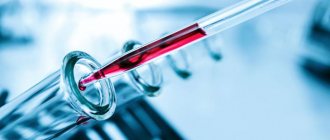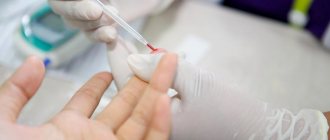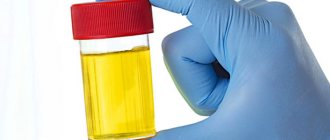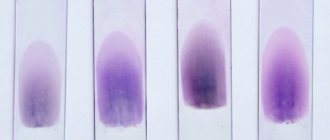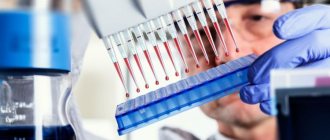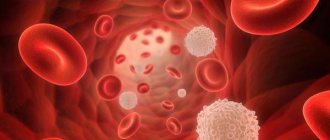0
Author of the article: Marina Dmitrievna
2017.09.29
13 256
Blood analysis
Doctors unanimously claim that the CBC is the most informative study of the patient’s health status at the initial diagnostic stage. A correctly performed procedure and its interpretation help a specialist quickly make a diagnosis and develop treatment tactics for a patient, based on his individual characteristics. From this article you will learn what exactly a general blood test is, how long it takes for the result to be ready, and whether preparation is needed for this procedure.
How to properly take a urine test in a clinic
Before going to the clinic, you should remember that its quality is affected by those foods and liquids that a person consumed before taking the culture test. Therefore, in order for the crop examination to be as effective as possible, you should prepare for the test, namely:
- You need to give up those products that can change the color of the crop, for example, smoked meats.
- There is no need to drink alcohol or take various dietary supplements and vitamins before visiting the clinic for a culture test.
- If you are taking any medications, it is important to inform your doctor at the clinic.
- You should not visit the sauna before taking the culture tests, or put too much strain on your body.
- After cystoscopy, you should not take a culture test at the clinic for 5-7 days.
Rules for conducting analysis
If we talk about the rules for passing this analysis, then there are no strict and complex regulations regarding this, but there are certain restrictions:
- The analysis is carried out in the morning. Before this, it is prohibited to consume food or drinks several hours before taking a sample of biomaterial.
- The main medical instruments used in this laboratory test are cotton wool, a scarifier and alcohol.
- For the examination, capillary blood is used, which is taken from a finger. In some cases, according to the instructions of a specialist, venous blood may be taken.
- Then the analysis is deciphered. There are also special hematological analyzers, with which it is possible to determine up to 24 blood parameters automatically. Such devices produce a printout with a transcript of the study almost immediately after taking blood.
How long does a urine test take?
This question worries many who are about to pass the sowing. So how many days does such an analysis take? Typically, how many days or time a culture test takes depends on the circumstances. Most specialists in hospital laboratories do testing within 3-4 hours. That is, when handing over the sowing in the morning in the afternoon, you can already get the finished sowing result. Also, other circumstances may influence how long or days such examinations take. Usually visitors are warned about this in advance. It is also recommended that when visiting a laboratory in a clinic, you independently check with specialists how much time or days they will need for the tests to be ready.
Liquids should only be handed over into clean containers that are free of debris and dust. It is recommended to collect urine in the morning before certain foods or liquids are consumed.
This will help make the testing more qualitative, since the urine will contain only those products that the body secretes during its life without other additives. Knowing how much urine analysis is done and how, you can prepare for such a process in advance.
A urine test is ordered by the attending physician to assess a person's health status. This is done both for diagnostic purposes (without taking into account the supposed diagnosis) and for preventive purposes, when the population undergoes a medical examination. How long does a urine test take and what can it show?
Blood collection procedure
Laboratories use two methods of collecting blood for testing:
- From a vein.
- From a finger.
In the end, the methods do not have significant differences and it is difficult to say unequivocally which is better. It’s just that the studies use different methods and different equipment, but the indicators do not differ much.
If a vein is used, the doctor must:
- Ask the patient to develop his hand: squeeze and unclench to speed up blood flow.
- Treat the patient's skin with an antiseptic to protect against infection.
- Use a new sterile needle.
- After the blood has been drawn, treat the injection site with an antiseptic.
As long as safety rules are followed and a level of cleanliness is maintained, the procedure is completely safe and quick.
Most often, blood is taken from a vein from adults, but how is the collection carried out if you need to take blood from an infant?
Most often, children's age obliges doctors to take blood from the thumb. A few drops in this case are enough.
In adults, the ring finger is used for sampling because:
- According to the anatomical features of the structure of the hand, in the case of poorly performed blood sampling from the ring finger, the likelihood of infection spreading is minimized.
- The ring finger has a high level of sensitivity, which is another plus in favor of choosing it over other fingers.
Regardless of where your blood is drawn from, it is important to remember to follow the rules before donating. The result depends on how you prepared for the test, and not on how long the general blood test takes.
General urine analysis
He is prescribed to assess the physico-chemical component and its sediment. During the study, specialists pay attention to the color of the material being examined, transparency, acidity and density.
They rent it out for:
- Identify various kidney diseases;
- Determine the presence of pyelonephritis, diseases of the urinary system and prostate gland;
- See in time the existing signs of disease development in the initial stages, when there are still no characteristic symptoms.
Indications for a general urine test may include:
- Presence of diseases that led to hospitalization. Regardless of the diagnosis, the patient is required to undergo diagnostics;
- Suspicions of kidney and urinary tract disease;
- Annual medical examinations for children and adults;
- The need to monitor the course of the disease and the effectiveness of treatment;
- Diseases caused by streptococci. After completion of treatment, it is recommended to conduct a diagnosis after a couple of weeks.
Before collecting urine, in order for the analysis to be the most informative, it is necessary to carefully carry out intimate hygiene. Then the middle portion is collected: the first stream is flushed down the toilet, after which the middle portion is collected into a sterile container, and the remaining stream is also flushed down the toilet. If necessary, store the jar in the refrigerator and take it to the laboratory no later than two hours after collection.
Many people are interested in the question: “How long does a urine test take?” It prepares very quickly, and the next day you can already see the results. There are also urgent diagnostics, where the results will be ready within an hour.
General information about tests
In order for the human body to function without disturbances, the amount and ratio of hormones per certain volume of blood must be within normal limits. The hormonal system, working together with the nervous system, interacts as an integral system.
Normal hormonal levels have certain indicators, but they are adjusted depending on gender, age and can change due to the individual characteristics of the body, heredity, and previous diseases.
It is based on the results of hormonal tests that the doctor can make a diagnosis and prescribe appropriate effective treatment to restore the proper functioning of one or another.
The following changes or disorders may be the reason for taking a blood test:
- excess weight gain;
- acne;
- menstrual irregularities;
- fibrocystic mastopathy;
- disturbances in the functioning of the female genital organs and kidneys;
- infertility;
- increased body hair in women.
Urinalysis according to Nechiporenko
The Nechiporenko analysis will help determine how many leukocytes, red blood cells and cylinders are in one milliliter of urine. It is done to evaluate the functioning of the kidneys and urinary tract. If deviations from normal values are found in a general urine analysis, the Nechiporenko diagnosis will help study a more detailed picture.
Indications for such a study are:
- Inflammation in the kidneys and urinary system, occurring hidden;
- Suspected hematuria, also occurring in a latent form;
- Assessing the effectiveness of disease treatment.
A urine test according to Nechiporenko, as well as a general one, should be sent to the laboratory no later than two hours after collection in order to be as informative as possible. After careful intimate hygiene, the average portion is collected into a sterile container. It is very important that it is collected immediately after waking up in the morning.
How many days should I wait for the results of such a study? The full picture will be known the very next day after delivery.
In order to timely diagnose hidden diseases and deviations from the norm, it is necessary to take a responsible attitude towards urine collection during medical examinations. In order not to repeat the study, if there are deviations in the test results, it is recommended to carefully perform intimate hygiene before collecting urine.
Abuse of antibiotics weakens the psyche
The best foods for the liver have been revealed
Sleep and its impact on health
Sleep plays a significant role in human life. It takes 6-10 hours a day. The need for the amount of sleep varies at different stages of a person’s life...
Psychological readiness of a woman for childbirth
In our country, most women are influenced by the “horrible” stories of friends, relatives, acquaintances and acquaintances of their acquaintances about difficult childbirth. Omissions, sighs and words: “What a nightmare!” — help the expectant mother paint an incomprehensible but terrible picture of what happens to a woman during childbirth...
Planning a pregnancy
Even in the last century, pregnancy was always a surprise, but now women are trying to plan for its occurrence. A sudden pregnancy can dramatically change your life plans, but the desired one brings a lot of joy. If you determine favorable days for conceiving a child, then you can carefully prepare for pregnancy, solve all important matters and eliminate health problems. In addition, pregnancy planning adjusts the psycho-emotional background and prepares the woman for the welcome of the long-awaited child...
Questions and answers
A urine culture test or, as it is also called, a bacteriological urine test is a laboratory test that allows you to test urine for the presence of microorganisms. A urine culture test may be required in the following cases:
For pain during urination in the pubic area;
Pain when urinating;
Material for bacteriological analysis of urine should be collected in the morning, immediately after sleep. This is done as follows: take sterile containers (if possible, you can purchase them at the pharmacy; if not, then take a glass jar and sterilize it along with the lid). The first and last drops are passed outside the dishes. Before you start collecting urine, you should thoroughly wash your hands and genitals. If you are taking any medications and need a urine culture test, be sure to notify your doctor. After all, medications, especially antibiotics, can affect the test result, and it may be false negative.
A urine test for bacteria can reveal:
Vulvovaginitis (may be the case when, in preparation for urine collection, the recommendations for collecting material were not followed, and the urine was collected incorrectly);
Urethritis;
Pyelonephoritis;
Prostatitis;
Lack of hygiene and others.
Expiration dates and readiness dates for blood tests
The timing of blood tests is influenced by several factors:
- type of laboratory test;
- level of technological equipment of the laboratory;
- specifics of the study (number and properties of specified indicators for diagnosis).
The timing of blood tests also depends on the requirements and capabilities of the clinic. Some medical organizations are reducing the average shelf life of blood tests, while others are increasing them.
Most modern clinics, equipped with the latest medical equipment, conduct full examinations and provide blood test results within one day, and in some cases you can receive the test result in your hands within 1-2 hours. But at the same time, in most public clinics the same studies can be carried out within 5–7 days. It turns out that the timing of blood tests directly depends on the choice of laboratory and the cost of the study .
Certain generally established limits for the shelf life of blood tests are indicated. However, here, too, various variations can occur, when the period of blood tests can be shortened or increased. Typically, medical institutions inform their patients about the types of blood tests and their expiration dates in leaflets and on information stands.
Let us consider the timing of blood tests for the main types of studies in more detail.
Clinical (general) blood test
The most common analysis, and it is one of the most important diagnostic methods for therapeutic, gynecological, cardiological, urological, and endocrinological studies.
- The turnaround time for blood tests is 5 days.
- The validity period of the tests is 10–14 days.
Blood chemistry
Allows you to assess the functioning of the main internal organs, provides information about metabolic processes (carbohydrate, protein, lipid metabolism), and also allows you to determine the need for essential microelements.
- Ready time: 4–5 days.
- The shelf life of blood tests is 10–14 days.
Allergy blood test
Gives an idea of the state of the human immune system. Allows you to determine the presence of allergens that cause allergic reactions in the body.
- The turnaround time for blood tests is 5–7 days.
- Blood tests are valid for up to 1 month.
Hormonal studies
They assess the condition of the endocrine organs, help diagnose various hormonal changes and identify diseases of the pancreas, thyroid gland, gonads, and assess the state of fat metabolism.
- The turnaround time for tests is 5–10 days.
- Shelf life – up to 6 months.
Blood tests for HIV infection
They allow detection of antibodies that arise in the body during infection with the human immunodeficiency virus.
- Ready time: 4–5 days.
- Blood tests are valid for up to 6 months.
Blood test for syphilis (RW)
A special type of laboratory blood test. Allows you to determine the presence of a pathogen in the human body.
- The turnaround time for blood tests is 4–8 days.
- Shelf life – from 20 days to 3 months.
Blood tests for markers of viral hepatitis groups B, C, D, E
Laboratory tests to determine the presence of antibodies to hepatitis viruses.
- The turnaround time for tests is 4–5 days.
- Blood tests are valid for up to 3 months.
Blood sugar test
The main type of study for diagnosing diabetes mellitus.
- Ready time: 1–4 days.
- The shelf life of blood tests is 10–15 days.
Analysis for fungal and parasitic infections
Determines the presence of antibodies to protozoan parasites and fungi.
- The turnaround time for blood tests is 4-8 days.
- Tests are valid for up to 6 months.
You can take blood tests to check your own health at any private clinic, of which there are many in any city. However, the results of the analysis are for informational purposes only and cannot serve as a diagnosis of any disease. To obtain more detailed information and prescribe qualified treatment, you need to contact a specialist and get a face-to-face consultation with a good doctor. The timing of blood tests is limited, for this reason you should promptly contact a specialist for interpretation and advice. Otherwise, the tests will have to be retaken. We wish you good health.
Urine sterility test
A urine sterility test is one of the most labor-intensive tests. Tank urine analysis is carried out as follows: the sample taken is grown in a nutrient medium in an incubator. The bacteria grown as a result of this manipulation are re-grown in a Petri dish. After this, the resulting bacteria are separated and grown again, only separately from each other. And only after these complex procedures can it be determined which bacteria are present and what antibiotics the bacteria of a given species are sensitive to. On average it lasts ten days. And, nevertheless, using a urine test for sterility, you can obtain information that a general urine test may not provide. Ideally, the urine of a healthy person should not contain bacteria. A urine test for infection should be performed to distinguish bacteriuria (the presence of microorganisms in fresh urine, indicating the presence of infection) from non-bacterial urine contamination.
How long are hepatitis test results valid?
Diagnosis of hepatitis is prescribed for liver damage by taking a fasting sample. Often prescribed to patients based on unpleasant symptoms:
- a sharp decrease in appetite;
- nausea, vomiting;
- yellowing of the skin;
- discoloration or pallor of stool;
- severe pain under the ribs on the right.
The answer is valid for 3 months. The result will be more plausible after 7 weeks from the date of initial infection, so a negative verdict does not mean that the disease is absent; it is possible to retake the test after some time as prescribed by the attending physician.
A general fasting test is taken from the fingertips; its validity period is up to two weeks. The need to take a test for blood glucose levels arises if you suspect the development of diabetes or other pathologies of the endocrine system. Additionally, an examination is carried out in the form of an oral test to determine glucose tolerance or an analysis for glycosylated hemoglobin. Blood is taken directly from the finger. The shelf life of the study does not exceed two weeks.
Urine flora analysis
Urine flora analysis is a complex process. However, the information that can be obtained by conducting it cannot be obtained from any other analysis. The study helps prescribe effective therapy for complex cases. You must always remember that the test must be taken either before the start or a week after the end of the course of uroseptics and antibiotics. Otherwise, the result will be unreliable.
Urine analysis is a process of studying its physical and chemical parameters - the amount of salts, blood cells, protein, microflora and much more dissolved in it. All these indicators are of high value in diagnosing the general condition of the body and the urinary system, in particular.
Features of the analysis name
Patients, when receiving a referral for an initial study, often wonder how a general blood test differs from a clinical one? This is not surprising, since doctors use these two concepts and call the same procedure differently.
In fact, a general blood test (CBC) and a clinical one are one type of diagnosis, and there are no differences, no matter what the doctor calls it and no matter what is indicated on the examination form. Sometimes the same blood test is called a general clinical analysis, which is also no different from those described above.
CBC is the simplest and fastest diagnostic test. But at the same time, during its course it is possible to evaluate from 5 to 20 different blood parameters. The doctor indicates which coefficients will need to be checked in the direction of the procedure, guided by the purpose of diagnosis or the symptoms present in a particular patient.
In some situations, it is necessary to prescribe a repeat examination if, for example, a study of 5 basic values indicated a change in them relative to the norm.
Chemical composition of urine and its properties
At the moment, medicine has identified about 150 chemical compounds, through the control of which the condition of the urinary system and the body as a whole is determined. Some of them, for example, urea, are a completely natural and normal component of urine, but there are other components that should not be detected at all in the urine of a healthy person (Bence-Jones protein) or present in minute proportions - protein, red blood cells, leukocytes, glucose. An increase in the number of these components indicates processes of a pathological nature, which leads to the need for a detailed analysis of urine for identified disorders.
The list of indicators studied during clinical urine analysis is very wide - here is the main part of this list:
- Color, transparency and smell;
- Specific density (weight);
- Acid reaction (pH);
- Protein compounds;
- Glucose;
- Ketones;
- Bile acid;
- Bilirubin;
- Urobilinov;
- Blood cells and its pigments - hemoglobin, porphyrin, hemosiderin;
- Myoglobin;
- Melanin;
- Indicana;
- Nitrite compounds.
The choice of urine parameters to be studied depends on the type of suspected pathology. For example, in case of endocrine disorders, it is important to determine the presence and quantity of ketones and glucose in the urine, and in case of nephrological problems - protein and blood pigments. A urine screening test is often done to exclude or confirm metabolic disorders, both hereditary and acquired. As a rule, such tests are used in diagnosing infants.
General urine analysis reasons for prescribing, rules for collecting biomaterial and interpretation of results
A general urine test is one of the most common medical laboratory services.
The microelement composition of urine may depend on the state of the body, the presence of diseases, and metabolism.
To assess the functioning of the kidneys and genitourinary system, a general urine test is usually prescribed.
Some commercial laboratories may offer a free consultation with a specialist about the services they provide.
Comfort comes first! Get medical services at your nearest laboratory.
In order for the test results to be as reliable as possible, it is necessary to properly prepare for their delivery.
Save on medical services by becoming a member of a special discount program.
Quality control of clinical laboratory tests, carried out according to international standards, is a powerful argument when choosing an independent laboratory.
Even in ancient times, healers were able to determine the state of the human body by his urine. And even if the conclusions were not always correct then, thousands of years ago people knew that urine could provide a lot of information about health. Undoubtedly, the capabilities of modern laboratories make it possible to conduct a general urine analysis much more accurately. This diagnostic method is still indispensable.
Method for determining daily diuresis
Daily diuresis is not a constant value; it fluctuates depending on the time of day and the composition of the diet. In addition, there is a direct dependence on age, for example, in a child who is an infant, diuresis is slightly higher than usual, which is quite normal and natural.
To determine quantitative indicators, test tubes with measuring marks are used. The largest amount of urine excreted is observed during the day - between two and six hours, and the smallest - at night. The normal ratio of daytime to nighttime diuresis is 3 – 4/1.
What indicators are determined during OAC?
As mentioned above, not a single diagnosis can be done without this examination, because a general blood test shows the presence of inflammatory and infectious diseases, anemia and cancer. Its results often become the starting point for a further set of diagnostic procedures.
Reference! The earlier the disease can be detected and its treatment begun, the higher the likelihood of recovery, and vice versa, the more advanced the disease, the less likely there is for a favorable outcome.
Thus, when routine medical examinations are carried out, which involve taking a UAC and a general urinalysis (general urinalysis), and some people are indignant about why these studies are needed and try to refuse, they do not understand what risk they are exposing themselves to. Whereas regular implementation of all necessary procedures makes it possible to timely identify dangerous pathologies and prescribe adequate therapy.
The minimum number of indicators that are included in a general blood test are the 5 main ones mentioned earlier, and then their detailed characteristics and normal coefficients for patients of different genders and ages will be considered. Their deviations from the reference values will immediately indicate to the doctor possible health problems of the subject.
Submission of venous biomaterial for detailed analysis
Hemoglobin(Hb)
This protein is one of the main components of red blood cells - erythrocytes. If its level drops, this often indicates a lack of iron, which, in turn, causes a decrease in the synthesis of vitamin B12 and hemoglobin itself.
As a rule, such a shift in the coefficient indicates the development of anemia (anemia). While an increase in the indicator several times may indicate cardiac or pulmonary failure. In addition, an increase in hemoglobin can be a clear sign of the occurrence of oncopathology of the hematopoietic system.
To clarify the factors that caused such violations of the indicator, it is imperative to conduct a number of additional examinations. The norms for an adult differ depending on gender and are 120–140 g/l for women, and 135–160 for men. In children, rates vary greatly as they grow older.
Red blood cells (RBC)
The main function of these cells includes the transport of oxygen to the tissues of the body and the return delivery of carbon dioxide, that is, ensuring the respiratory process. Violation of their performance does not always indicate pathology, so it is important to conduct further examination, which will allow the doctor to understand the situation.
The normal erythrocyte content is considered to be 3.7–4.7 million/mC for females and 4.0–5.5 for males. A decrease in the indicator may be a consequence of a lack of B12, excessive blood loss, which is typical for women during menstruation, and does not give cause for concern.
An increase in values is often observed among residents of high mountains, where the air is thin, as well as among pilots or climbers. In these cases, deviations are considered to be the norm, but in others they are a sign of diseases of the hematopoietic, respiratory or cardiovascular systems.
It is important that the study materials are interpreted by a qualified physician, as the results may be difficult for a non-specialist to read and there is a possibility of error.
Platelets (PLT)
The main function of these cells is to ensure the formation of a blood clot in the event of bleeding. Their normal content in the blood is 1.4–3.4 g/l. An increase in the indicator may indicate the presence of a recent injury, thrombocytopenia, neoplasm, etc.
An increase in platelets after surgery will be considered a normal reaction of the body. A decrease in the coefficient is observed during intoxication with chemicals or in the presence of various infections or acute or chronic leukemia.
In addition, the content of these cells may fluctuate when taking a certain number of medications, so before taking the test, you must notify your doctor about their use. This will help him read the diagnostic results correctly.
ESR (ESR)
This coefficient determines the erythrocyte sedimentation rate, which normally should not be higher than 15 mm/hour. Higher values are considered a violation and require additional diagnostic steps. An ESR indicator that has increased to 30–40 mm/h can tell the doctor about the presence of an inflammatory process, poisoning or intense bleeding.
White blood cells (WBC)
The role of these blood cells is to provide the body's protective function. Based on their quantity and quality, as well as their relationship with each other, a specialist can draw an appropriate conclusion. Their indicator provides information about the ability of the immune system to resist toxins, harmful microorganisms and foreign bodies.
Normal coefficients for people of different sexes and ages may have slight differences, but should not go beyond 4.5*109–10*109 per liter. A decline in their level may be a consequence of blood diseases, viral infections, hepatitis, as well as negative reactions of the body to certain types of medications.
An increase in the indicator indicates the introduction of bacterial infections, external or internal heavy bleeding. If deviations in this parameter are detected as a result of the OAC, a further more in-depth examination is always prescribed, which shows a detailed blood test.
Indicators determined by a general blood test
Research on Zimnitsky
This method of urine analysis allows you to determine the degree of the kidneys’ ability to regulate the process of concentration and removal of urine from the body, and specifically, it evaluates the ratio of fluid consumed per day and the amount of urine excreted after a certain time. The study is carried out separately for daytime and nighttime periods. Daily portions of urine are collected as it is excreted into 8 containers and by summing the first and last 4 of them, diuresis at night and during the day is determined. The specific gravity of urine is noted for each portion individually, which makes it possible to determine the range of changes in this indicator.
Conducting research
General analysis requires compliance with a number of rules:
- A week before donating blood, stop taking medications. If it is impossible to interrupt drug treatment, tell your doctor what medications you are taking. If this is not done, there is a high probability that the test will give incorrect results.
- A few days before the procedure, avoid fried and fatty foods, smoked meat and fast food.
- The day before the test, refrain from caffeine and strong tea.
- Before the analysis, limit or minimize physical activity.
- A few days before the test, do not drink juices or carbonated drinks. Avoid alcohol.
- 6-8 hours before the test, do not eat, donate blood on an empty stomach.
- You should not smoke 10 hours before the test.
- Before the analysis, stop chewing gum.
You should not neglect anything from this list, since following the rules ensures the reliability of the result, which is vital in the treatment and diagnosis of diseases.
The reliability of the results is important primarily for the patient. If you are negligent in preparation, the result will show an invalid picture of the state of the body.
Methods for studying protein compounds
There are three such methods: qualitative, semi-quantitative and quantitative.
Qualitative research
This method is based on the ability of the reaction of protein cells to react in a certain way to the reagents used - under their influence, changes occur that lead to the deposition of sediment in the urine in the form of flakes and turbidity of the liquid.
For such a sample, two test tubes are prepared - the main one and the control one. Turbidity is determined by illuminating the sample against a black background. For qualitative research, Heller's methods, boiling, research with sulfasalicylic acid (15 - 20%) and others are also used.
The most popular methods of qualitative urine examination according to Heller and using sulfasalicylic acid are considered. The latter is most effective for diagnosing proteinuria.
Semi-quantitative methods
The main ones are the use of special protein-sensitive test strips and the Brantberg-Roberts-Stolnikov method. The latter uses the Heller ring test as a basis, so to some extent they have the same disadvantages.
Today, semi-quantitative testing studies predominate. The main reagent of such test strips is bromophenol blue. The amount of protein is determined depending on the color of the test strip obtained. Most often, this is done visually, but it is possible to use special analyzers. The simplicity, speed and convenience of this method, unfortunately, also has a downside - low reliability of the research results. This is due to the fact that the indicator is maximally sensitive to albumin and reacts relatively weakly to other proteins, therefore the method is effective for proteinuria of a glomerular nature with a predominance of albumin proteins in the urine.
Quantitative methods
These methods for determining protein in urine use:
- Sulfacylic and trichloroacetic acids;
- Benzotonium chloride;
- Biuret reaction;
- Lowry method;
- Amburger method;
- Nechiporenko's method.
Amburger method
This method is used when it is necessary to measure the quantitative content of formed elements in urine. It is customary to count the number of such elements in the urine excreted by the patient within 1 minute.
Amburger's study is prepared using a graduated test tube placed in a centrifuge. To determine the indicators, a pipette is used to collect the sample, a laboratory counting chamber and a microscope.
The urine sample being tested is thoroughly mixed, after which 10 ml of liquid is taken from it and sent to a centrifuge for 5 minutes. After this process, the upper part of the liquid is drained, leaving a sediment of 1 ml, which is mixed with the drained liquid, mixed again and placed in the counting chamber. The number of leukocytes and erythrocytes in the counting chamber is counted individually. This method is most effective for outpatient treatment, since cell autolysis is extremely unlikely in urine collected over a short period of time.
What is it, indications for use
CBC is a laboratory test that involves a quantitative test of blood cells (platelets, erythrocytes and platelets), leukemia, hemoglobin concentration, and calculation of the ratio of plasma to cell mass (hematocrit).
This clinical test is considered the most common diagnostic method in all countries. This is explained simply: any pathological process that takes place in the human body always affects the composition of the blood, and this effect is individual for each disease.
